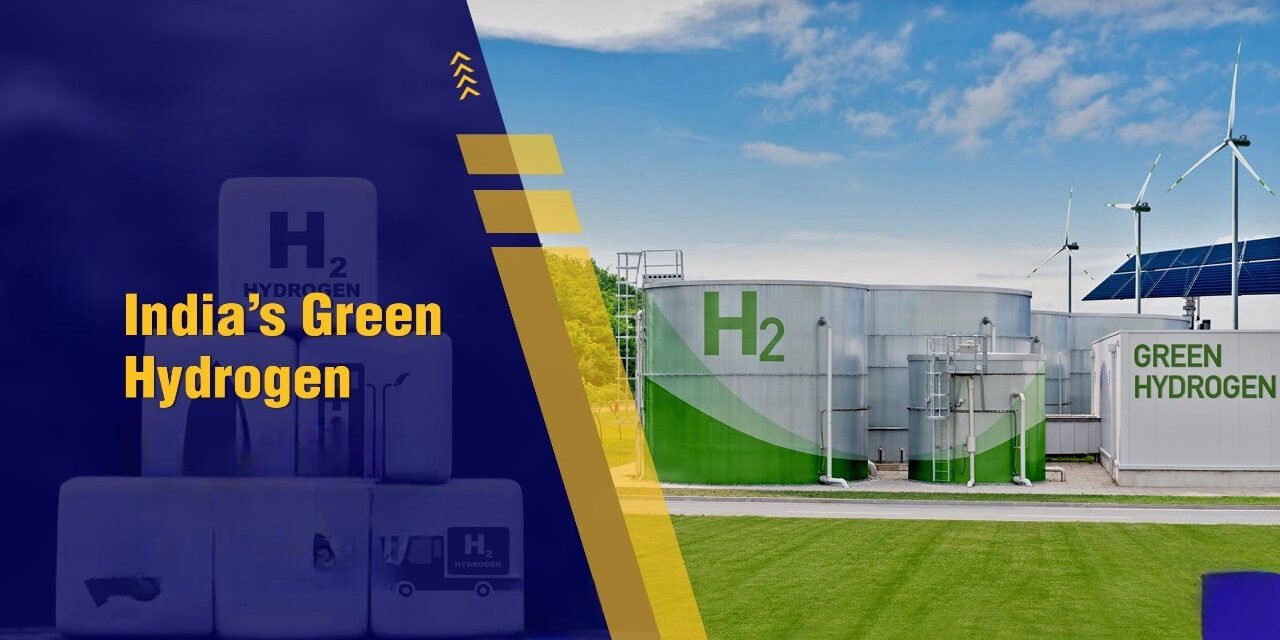India is accelerating its efforts toward establishing green clusters of hydrogen-powered industries as part of its strategy to transition to a low-carbon economy and reduce dependence on fossil fuels. These clusters are intended to serve as hubs for the development and implementation of green hydrogen technologies, focusing on renewable energy production and sustainable industrial practices.
Green hydrogen is produced by splitting water into hydrogen and oxygen through electrolysis, powered by renewable energy sources such as solar and wind power. Unlike traditional hydrogen production methods, which rely on natural gas and emit significant amounts of carbon dioxide, green hydrogen offers a clean and sustainable alternative. By harnessing renewable energy to generate hydrogen, these clusters are poised to play a vital role in India’s decarbonization efforts.
India’s government has unveiled plans to develop hydrogen hubs in various regions of the country, creating specialized green clusters where industries can collaborate and innovate in the hydrogen economy. These clusters will focus on the production, storage, and transportation of green hydrogen, as well as its application in sectors such as steel, chemicals, fertilizers, transportation, and power generation. By integrating hydrogen as a clean energy source, India aims to reduce the carbon footprint of heavy industries and contribute to its ambitious climate goals.
Key to the development of these green clusters is India’s National Hydrogen Mission (NHM), which aims to make the country a global leader in green hydrogen production and export. The government is offering incentives, including subsidies for hydrogen production, infrastructure development, and the establishment of hydrogen refueling stations. Public and private sector companies are expected to collaborate within these clusters to leverage economies of scale and technological innovation, fostering a competitive green hydrogen market.
The establishment of hydrogen-powered industries within these clusters will not only help meet domestic energy needs but also provide India with the opportunity to become a major exporter of green hydrogen in the future. India has abundant renewable energy resources, particularly solar and wind, which can be harnessed to produce green hydrogen at a competitive cost. The country’s vast industrial base also presents an ideal testing ground for the large-scale implementation of hydrogen in industries like steelmaking, refining, and transportation, where the adoption of clean energy solutions is challenging but necessary for decarbonization.
The development of green hydrogen clusters will also contribute to job creation, especially in rural and industrial regions, by driving investments in renewable energy infrastructure, electrolysis technology, and hydrogen production facilities. Additionally, the shift toward hydrogen-powered solutions can enhance energy security and reduce India’s reliance on imported oil and gas, which is a critical strategic goal for the country.
India’s green hydrogen clusters are expected to be a cornerstone of the country’s energy transition, helping to position it as a leader in the global hydrogen economy. As India moves forward with its efforts to scale up green hydrogen production and adoption, the clusters will play a key role in decarbonizing its industrial sector and achieving its net-zero emissions targets by 2070.

















